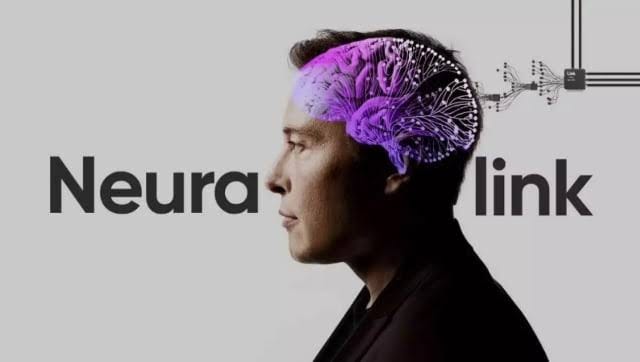In the realm of cutting-edge technological innovation, few endeavors capture the imagination quite like Neuralink’s ambitious quest to develop a brain-computer interface (BCI). Spearheaded by entrepreneur Elon Musk, Neuralink aims to revolutionize the way humans interact with technology by creating a seamless connection between the human brain and computers. In this comprehensive exploration, we will delve into the intricacies of Neuralink’s brain-computer interface, unpacking its groundbreaking potential, unraveling the underlying science and technology, and examining the ethical and societal implications of this futuristic endeavor.
Understanding Neuralink’s Brain-Computer Interface:
At its core, Neuralink’s brain-computer interface is a sophisticated system designed to bridge the gap between the human brain and external devices, such as computers, smartphones, or prosthetic limbs. The interface consists of a network of ultra-thin, flexible electrodes, or “threads,” implanted into the brain’s neural tissue, allowing for bidirectional communication between neurons and external devices. These electrodes are connected to a small, coin-sized device called the “Link,” which is implanted beneath the skull and interfaces with external devices wirelessly.
The Science Behind Neuralink:
Neuralink’s brain-computer interface relies on a combination of neuroscience, engineering, and cutting-edge technology to achieve its transformative capabilities. The key components of Neuralink’s technology include:
- Ultra-Thin Electrodes: Neuralink’s electrodes are composed of ultra-thin, flexible threads that are finer than a human hair, allowing for precise placement and minimally invasive implantation into the brain’s neural tissue. These electrodes serve as conduits for recording and stimulating neural activity with unprecedented precision and resolution.
- Neural Recording: Neuralink’s electrodes are capable of recording electrical signals from thousands of neurons simultaneously, providing real-time insights into brain activity at the cellular level. This neural data can be decoded and analyzed to understand the underlying patterns of neural activity associated with various cognitive functions, behaviors, and intentions.
- Neural Stimulation: In addition to recording neural activity, Neuralink’s electrodes can also deliver targeted electrical stimulation to specific regions of the brain, modulating neural circuits and influencing brain function. This capability opens up possibilities for therapeutic interventions, such as treating neurological disorders, restoring sensory function, or enhancing cognitive performance.
- Wireless Communication: Neuralink’s brain-computer interface enables wireless communication between the brain and external devices, allowing for seamless integration with smartphones, computers, or other digital platforms. This wireless connectivity eliminates the need for cumbersome cables or connectors, providing greater freedom and mobility for users.
Potential Applications of Neuralink’s Technology:
The potential applications of Neuralink’s brain-computer interface are vast and diverse, spanning healthcare, communication, entertainment, and beyond. Some of the most promising areas of application include:
- Neuroprosthetics: Neuralink’s technology holds the promise of revolutionizing neuroprosthetics by providing individuals with disabilities, such as paralysis or limb loss, the ability to control prosthetic devices directly with their thoughts. By decoding neural signals and translating them into actionable commands, Neuralink’s interface could restore mobility and independence to millions of people worldwide.
- Brain-Machine Interfaces: Neuralink’s brain-computer interface could enable entirely new forms of human-machine interaction, allowing users to control computers, smartphones, or other digital devices with their thoughts alone. This could revolutionize the way we interact with technology, making communication faster, more intuitive, and more immersive.
- Neurological Disorders: Neuralink’s technology has the potential to transform the diagnosis and treatment of neurological disorders, such as Parkinson’s disease, epilepsy, or depression. By monitoring neural activity in real-time and delivering targeted stimulation to dysfunctional brain circuits, Neuralink’s interface could alleviate symptoms, improve quality of life, and even cure debilitating conditions.
- Augmented Reality: Neuralink’s brain-computer interface could enhance the immersive experience of augmented reality (AR) by overlaying digital information directly onto the user’s visual field based on their cognitive intent. This could enable seamless integration of digital content into the physical world, blurring the lines between reality and virtuality.
Ethical and Societal Implications:
While Neuralink’s brain-computer interface holds tremendous promise for advancing human capabilities and improving quality of life, it also raises complex ethical and societal questions that must be carefully considered:
- Privacy and Security: The integration of brain-computer interfaces into everyday life raises concerns about privacy, data security, and the potential for unauthorized access to sensitive neural data. Safeguarding the integrity and confidentiality of neural data is paramount to ensure users’ privacy and autonomy.
- Equity and Access: There is a risk that Neuralink’s technology could exacerbate existing disparities in access to healthcare and technology, disproportionately benefiting affluent individuals or populations with greater resources. Ensuring equitable access to neural technologies is essential to prevent exacerbating social inequalities.
- Autonomy and Consent: Neuralink’s brain-computer interface raises questions about autonomy and consent, particularly concerning the voluntary nature of neural augmentation and the potential for coercion or manipulation. Upholding principles of informed consent and respecting individuals’ autonomy is essential to safeguard their rights and dignity.
- Identity and Authenticity: The integration of neural interfaces into the human experience raises philosophical questions about identity, authenticity, and the nature of consciousness. As humans become increasingly interconnected with technology, maintaining a sense of self and preserving individual agency and authenticity become paramount.
Conclusion:
In conclusion, Neuralink’s brain-computer interface represents a bold leap into the future of human augmentation and technology-mediated cognition. By leveraging advances in neuroscience, engineering, and digital innovation, Neuralink aims to unlock the full potential of the human brain and redefine the boundaries of human experience. However, realizing this vision requires careful consideration of ethical, social, and philosophical implications to ensure that Neuralink’s technology serves the common good and upholds fundamental principles of human dignity, autonomy, and well-being. As we embark on this transformative journey into the realm of neural interfaces, it is essential to navigate the complexities with humility, foresight, and a commitment to responsible innovation.
